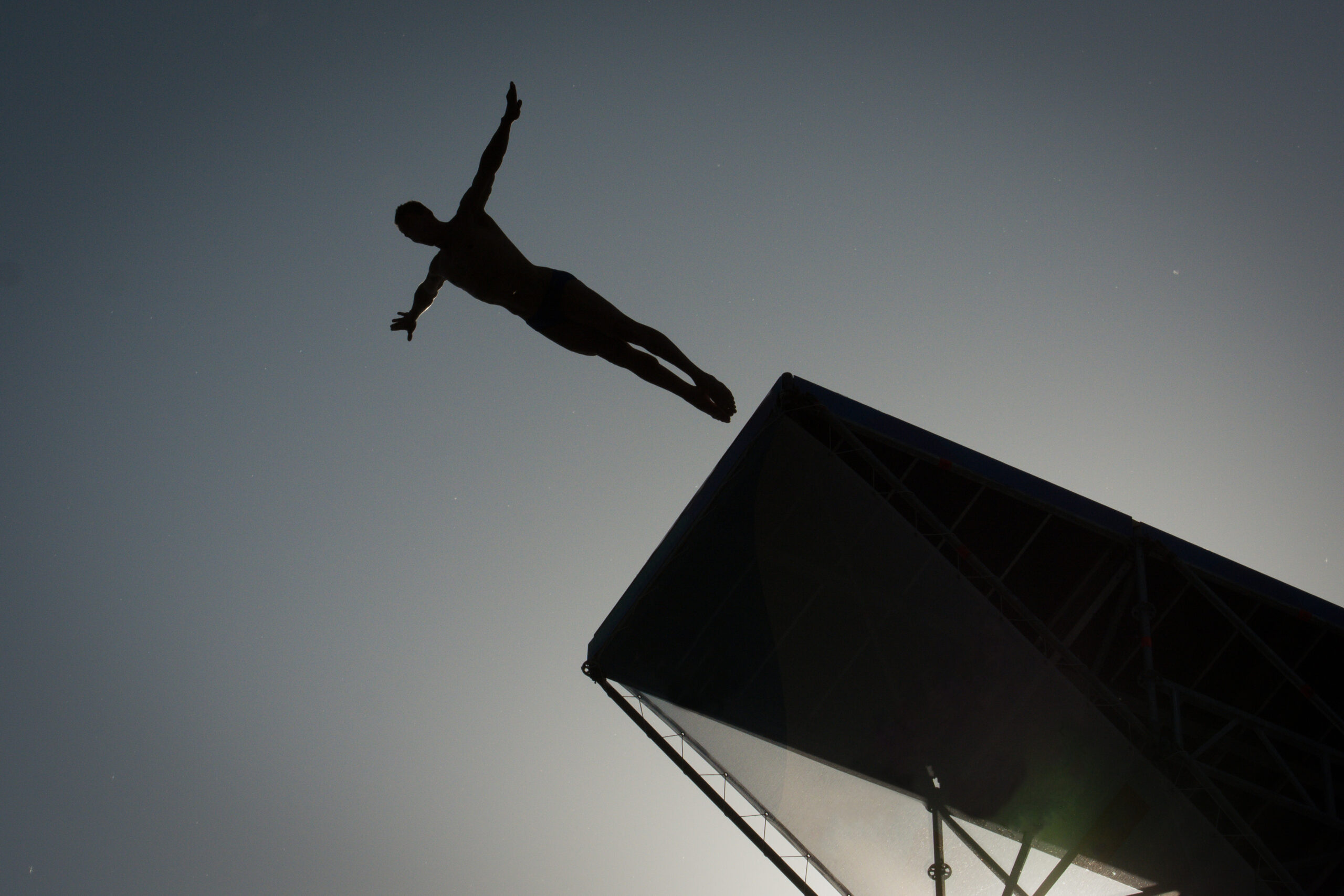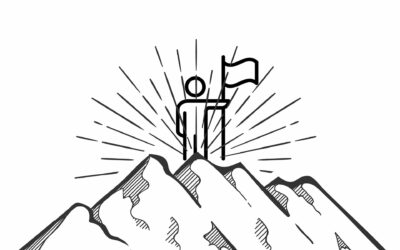Choosing to take a risk is often well-calculated. You understand the consequences. You know what you have to gain and what you have to lose. At one point or another, you’ve likely had to make a decision that exposed you to great risk. Do you take the risk and if so was it the right risk?
Before I became an organizational development professional, I was a professional high diver with the U.S. High Diving Team. Every day for seven years, I climbed to the top of a hundred-foot ladder, stood atop a one-foot-by-one-foot perch, and hurled myself off — plummeting 10 stories down at speeds of more than fifty miles per hour into a pool that was only ten feet deep.
Making the Jump
Most high divers perform their first high dive during practice. I, however, had decided to perform my maiden high dive during our show in front of a live audience of 2,000 Texans. I had been inching toward this moment for weeks. High divers do not start at the top, they start at the bottom. Each day during practice, my teammates and I would goad each other leaping from incrementally higher heights—first 10 feet, then 20, and so on.
My moment had arrived. Under the sweltering Texas sun, I grabbed the steel of the high-dive ladder. The higher I climbed, the more nervous I became. The body has a way of resisting foolishness. My palms tingled with sweat. My stomach teemed with rioting butterflies. I could hear the thumping of my pulse. Although I had performed scores of dives at lower levels, this was feeling more and more like an unnatural act.
The Right Reason
At 60 feet I made a major mistake—I looked down. Suddenly, I was struck with paralyzing fear. “Oh God,” I groaned, “this is the stupidest thing I’ve ever done. I should turn back now while I can still get out of this alive.” The absurdity of the moment was head-spinning. What was I trying to prove? Was I really doing this to conquer my secret fear, or was it something else?
After a few deep breaths, I started to regain my composure. Somewhere inside me, a little voice reasoned,
“You can do this. You’ve visualized this moment over and over, you’ve practiced long and hard, and you’ve got a lot of support down there on the pool deck. Press on.”
With that, I swallowed hard, looked up at the top platform, and followed the assurances of my inner voice.
My back was to the audience as I situated myself on the top platform. To heighten the dramatic impact, a diver does not turn to face an audience until they are on the edge of their seats. As our team captain would say, “We want ‘em frog tight with anticipation.” This interlude of theatrical suspense allowed me to catch my breath and view the expansive Texas horizon. It was stunningly beautiful.
The Risk
A flurry of thoughts and feelings bombarded me.
“I could die. I could be dead in a few moments. Or maybe I will crash hard and be paralyzed. I’ll be in a wheelchair for the rest of my life.”
The fear was gripping, yet strangely exciting. This was, by far, the greatest risk I had ever attempted. It was a sheer rush teetering at the far edge of my own potential. It was also humbling. Of all the people who have ever lived, some 100 billion of them, there were probably fewer than 1,000 who had done what I was about to do. In a few moments, I would be one of them—dead, paralyzed, or otherwise.
As I stretched out my arms and readied for the dive, it was as if my body had become the fulcrum between the poles of fear and desire: fear of what could go wrong and desire to succeed. It was an odd, balanced moment, a moment perfectly situated between past and future, surrender and pursuit. It was a NOW moment. Confronting my own mortality made me feel wonderfully alive and fully immersed in the present. I was filled with supersensory awareness, I could see for miles and miles, and I could feel the wind blowing between my fingers. And just above my head, on the top of the high-dive ladder, I could hear the American flag proudly snapping in the Texas wind.
Then the little voice whispered again, “You can do this.” With that, I jumped off the ladder as if I were leaping into the arms of God.
The Reward
For a fraction of a second—the instant between the dive’s pinnacle and descent—I was suspended in mid-flight like a swan hovering near heaven’s ceiling. Then, schwoosh, I started plummeting toward the water at breakneck speed. I had an overwhelming sensation that at any moment I would tumble out of control like a wayward lunar module. It looked as if the water was racing toward me with accelerating velocity, though the reverse was true: I was moving toward it at nearly 50 mph. Yet the feeling that eclipsed all others was a profound vulnerability—that I was exposed. And I was. High divers do not wear protective padding; they wear swimsuits. You are completely unprotected.
Regardless of how genetically predisposed a person is to taking risks, risk-taking success is contingent upon a good fit between the risk and the risk-taker. The risk-discerning question “Is this the right risk for me?” is one of compatibility. Right risks are often those that offer the potential to fill our gaps. Behind every right risk is the right reason, and successful risk-takers take the risks they do because the risks complete them in some way. Making those 1500 leaps off the high-dive platform taught me that risk-taking is not about seeking thrills, it is about seeking fulfillment.
Leadership and Risk
As a leader, it is important to be willing to take risks. But how do you know if a risk is worth taking? Here are a few things to consider:
- What are the potential rewards? What could you achieve if the risk pays off?
- What are the potential consequences? What could go wrong if the risk doesn’t pay off?
- How likely is it that the risk will pay off? What is the probability of success?
- What is the cost of failure? What will be the cost if the risk doesn’t pay off?
If the potential rewards outweigh the potential consequences, and the probability of success is high, then the risk may be worth taking. However, if the potential consequences are too great, or the probability of success is too low, then it may be best to avoid the risk.
The risk you chose to take might not be a risk to others. The right risk gives you something to take away from an experience. The right risk leaves you better than you were.
A lot of people ask me, “How did you get interested in the virtue of courage?” My answer? It actually started with a profound fear! And choosing to overcome that fear and take the risk made all the difference for me.
Do you have something holding you back in your career or life? What is a right risk that could fill the gap between where you are and where you want to be?
This post is based on an excerpt of Right Risk: 10 Powerful Principles for Taking Giant Leaps with Your Life.



